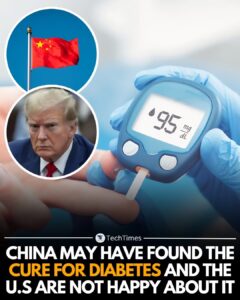
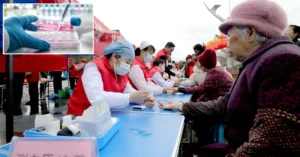
In a revelation that could transform global healthcare, Chinese scientists have reportedly developed a stem cell therapy that reverses both Type 1 and Type 2 diabetes. While this scientific leap offers new hope for over 500 million people worldwide living with the chronic disease, it also threatens to shake up the multi-billion-dollar pharmaceutical industry that thrives on treating—not curing—diabetes.
The Breakthrough Treatment
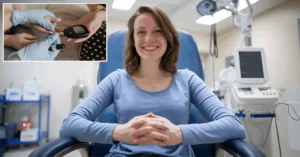
At the core of this innovation is a technique that uses a patient’s own fat cells to generate insulin-producing islet cells. These engineered cells are then transplanted into the body, where they naturally regulate blood sugar levels. Since the cells are autologous (derived from the same person), there’s no risk of immune rejection, and patients don’t require immunosuppressants.
Initial trials have produced jaw-dropping results:
- A 25-year-old woman with Type 1 diabetes went off insulin completely within 75 days.
- A 59-year-old man with Type 2 diabetes was insulin-free in just 11 weeks. One year later, he remains off all medication.
- How It Works
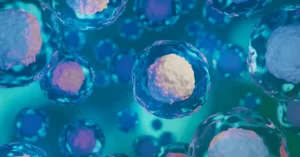
This therapy takes advantage of induced pluripotent stem cell (iPSC) technology, a method of reprogramming adult cells to behave like embryonic stem cells. Scientists then coax these cells into becoming islet cells, which the pancreas uses to produce insulin.
The process essentially rebuilds a diabetic pancreas from the inside out—without the need for donor organs, immune-suppressing drugs, or lifelong insulin therapy.
Why This Could Change Everything

The implications of a scalable, effective diabetes cure are enormous:
- No more insulin injections or pumps.
- Reduced risk of kidney failure, blindness, and amputations from unmanaged diabetes.
- Billions saved in long-term healthcare costs.
For countries burdened with rising diabetes rates, this therapy could mean fewer hospital visits, better quality of life, and a dramatic decrease in chronic disease management costs.
The $20 Billion Problem

While the news is being celebrated in the medical community, the pharmaceutical industry is less enthusiastic. In the U.S. alone, insulin sales generate over $20 billion annually. Companies have little incentive to promote a one-time cure when they profit from daily, lifelong treatment.
Industry insiders warn that such innovations will face steep resistance, including:
- Regulatory hurdles and delays by agencies heavily influenced by pharmaceutical lobbying.
- Suppression or discrediting of research results that threaten existing profit models.
- Patent wars and legal blockades to stall or control access to new therapies.
Global Tensions and Healthcare Inequality

The fact that this innovation is emerging from China adds a geopolitical dimension. With the West traditionally leading in pharmaceutical development, a cure from China could upset the balance of influence in global health.
Additionally, if access is restricted in some countries due to political, regulatory, or economic pressure, millions of patients may be left behind, continuing to pay exorbitant prices for insulin even when a functional cure exists.
Cautious Optimism
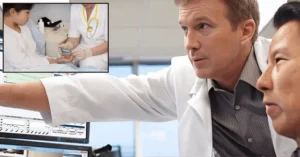
Despite the promise, researchers emphasize the need for broader clinical trials and long-term monitoring. Questions remain:
- Will the stem cell-derived islets continue functioning indefinitely?
- Can this therapy scale for mass production and distribution?
- What are the long-term safety implications?
China’s National Medical Products Administration is fast-tracking the next phase of trials, while international researchers are already seeking collaboration.
The Future of Diabetes
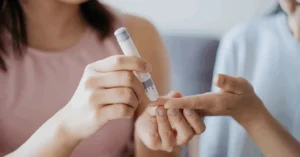
If successful, this therapy could be the beginning of the end for diabetes as we know it. But the road ahead won’t just require scientific validation—it will demand political courage, ethical clarity, and consumer advocacy to overcome the resistance of entrenched industry giants.
What happens next may depend less on scientists and more on public pressure. Advocacy groups, patient communities, and independent media will play a crucial role in keeping this breakthrough in the spotlight. If enough voices demand transparency, accessibility, and urgency, this therapy could shift from a suppressed cure to a global standard—redefining not just diabetes care, but the balance of power between innovation and industry.
Conclusion
This breakthrough forces us to confront a difficult truth: modern healthcare is not always designed to prioritize cures. For decades, millions have been told to manage—not overcome—their condition, feeding an industry built on recurring prescriptions, routine doctor visits, and lifelong dependency. A cure challenges that model at its core.
This isn’t just a medical story—it’s a flashpoint in the ongoing struggle between public health and corporate profit. As the world watches closely, one question looms large:
Will humanity embrace the cure, or will it be buried beneath bureaucracy and greed?